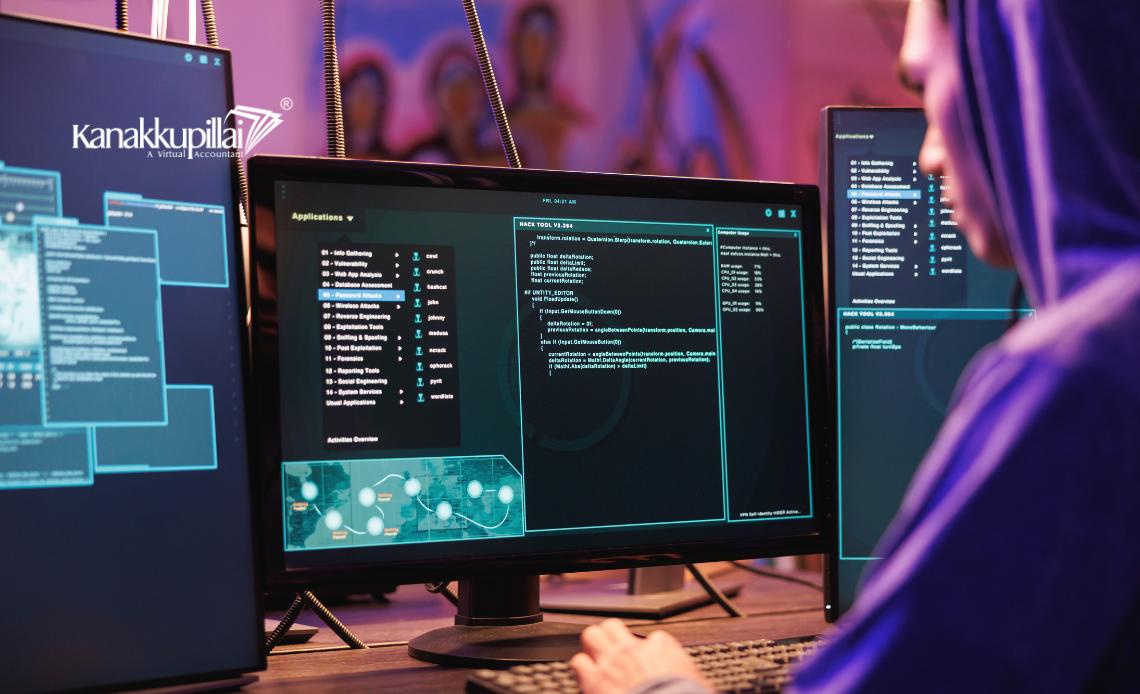Trademark Class 9 is crucial in today’s fast-paced digital environment. Understanding Class 9 and its intricacies would help businesses and customers.
According to trademark classification, trademark Class 9 covers several software, computer, and electronics items. Due to its important position, this trademark categorisation is appropriate for tech enterprises.
Class 9: Computers: A Brief Introduction
Trademark Class 9 covers computers and peripherals. This includes desktops, laptops, servers, and academic and industrial computers. Protecting computer businesses’ trademarks ensures customers of constant quality.
Innovations in software
In Class 9, software plays a key role. The software that runs our computers and other electronic devices falls under this category. Trademarks in Class 9 protect the intellectual property of software creators, allowing for more creativity and rivalry in the digital sphere. This includes everything from simple word processors to major enterprise resource planning systems.
The World of Electronics: Where Creativity and Technology Collide
Numerous technical devices that are now considered essential are included in Class 9 of the Trademark Act. This encompasses various electronic devices, including smartphones, tablets, cameras, and wearable gadgets. Companies that spend money on research and development to make new devices rely on trademarks to protect their intellectual property and encourage further technical advancement.
Importance of Class 9 Trademark Protection
Businesses in the technology industry cannot afford to risk losing trademark protection in Class 9. It protects a firm’s trademark from being used without permission and gives the company legal action against counterfeit goods. Class 9 trademark registration allows firms to differentiate themselves in the marketplace, earn customers’ confidence, and gain an edge in the cutthroat, rapidly developing field of information technology.
Tendencies and Prospects for Class 9
Despite the obvious benefits of trademark protection, companies operating in Class 9 confront their own set of problems. The ongoing need for innovation, global market dynamics, and the ever-increasing speed of technical improvement all present challenges. Class 9 trademark protection is available for enterprises that develop ground-breaking ideas, user-friendly software, and new electronic devices in response to these problems.
List of services classified under Trademark Class 9:
- Scientific, nautical, surveying, photographic, cinematographic, optical, weighing, measuring, signalling, life-saving, and teaching apparatus and instruments.
- Instruments and apparatus for conducting, switching, transforming, accumulating, regulating, or controlling electricity.
- Recorded and downloadable media, computer software, and digital applications for various purposes.
- Data processing equipment and computers; computer hardware and peripherals.
- Fire-extinguishing apparatus.
- Audiovisual and multimedia equipment.
- Electronic publications and downloadable content.
- Cameras, photographic equipment, and accessories.
- Telecommunications apparatus and equipment.
- Electronic security and surveillance apparatus.
- Calculators and electronic organizers.
- GPS navigation devices and systems.
- Measuring and testing apparatus and instruments.
- Wearable devices, smartwatches, and fitness trackers.
- Virtual reality and augmented reality devices.
- Electronic control systems for household and industrial use.
- Electric and electronic locks.
- Radar and sonar equipment.
- Electronic game software and gaming apparatus.
- Electric cables, wires, and connectors.
- Computer servers and data storage devices.
Class 9 Trademarks: Many Facets to Consider
1. Changes to Computers Caused by the Digital Revolution
Class 9 trademarks protect more than simply gadgets; they also protect the foundations upon which new ideas might flourish. This category contains an extensive selection of computing devices, from desktops geared for sophisticated computations to compact laptops optimized for movement. Access to secure, cutting-edge computers is guaranteed thanks to the trademarks in this space.
2. Finding Your Way Around the Software Industry
The software that runs our devices is what makes them possible. This portion of Class 9 covers a wide range of topics, from the operating systems that run our gadgets to specialized apps serving a variety of functions.
Trademark Class 9 in electronics covers a wide range of devices, from smartphones that have grown into an extension of ourselves to smartwatches and cameras that record moments in spectacular clarity. Class 9 trademarks encourage companies to spend in R&D to commercialize breakthrough electrical concepts, paving the path for game-changing developments.
3. Class 9 – Struggles and Successes from a Business Standpoint
The IT industry is well-known for its lightning-fast pace of change. Due to the dynamic nature of their industry, Class 9 businesses have unique problems, including rapidly shifting customer tastes and preferences. Trademarks serve as shields to prevent others from copying their original ideas and work.
4. Changes in International Trade
National boundaries do not limit products in Class 9. Global market navigation has its advantages and disadvantages. Brands may confidently grow their operations when trademarks are registered, especially in foreign jurisdictions.
5. Protecting Your Company’s Image and Winning Over Customers
- Class 9 trademarks are essential in creating consumer trust in a certain brand. In a saturated market, when customers are spoiled for choice, a strong brand name may help buyers feel confident that they are purchasing original, high-quality goods.
- Counterfeit devices and computer programs pose dangers to organizations and individuals. Strong trademark protection may dissuade dishonest actors and keep legitimate companies’ names in good standing.
The Future Awaits: Trademark Class 9
Artificial intelligence, augmented reality, and quantum technology are all shaping the future of Class 9. These innovations provide unmatched potential and difficulties, making it vital for organizations to secure their intellectual property.
As time goes on, there is an increasing focus on environmentally responsible and morally progressive technological developments. Trademarks in Class 9 can show a company’s dedication to environmental responsibility, promoting good customer attitudes.
FAQs
- In Class 9, what factors should be considered first?
Class 9 trademarks must be distinctive, appropriate, and capable of establishing a distinctive brand identity.
- Can Class 9 Trademarks Protect Virtual Reality Apps?
Virtual reality software and other new technologies can be trademarked in Class 9 as long as they fit the class criteria.
- To stop rivals from stealing software, what measures may organisations take?
Copyrights, patents, and trademarks allow businesses to secure their software development efforts. Particularly, the software’s trademark protects the software’s brand reputation.
- For Class 9 trademarks, is there a separate set of rules for overseas registration?
The Madrid System does indeed control worldwide trademark registration for Class 9 items, streamlining the procedure for enterprises going global.
- When registering a trademark in Class 9, how important is it to consider how consumers perceive the product?
Trademark registration relies heavily on how consumers perceive the brand. A trademark that connects strongly with people promotes brand memory and loyalty.
- Can companies legally protect their electrical product designs?
Firms may, in fact, trademark the look of their electronic equipment in Class 9.
- How can young companies shield their IP in Class 9 with few resources?
Startups may focus on protecting their most important inventions by using low-cost tactics like trademark filing in the areas where they operate.
- To what extent can trademarks help verify the legitimacy of cybersecurity products?
Cybersecurity trademarks guarantee the legitimacy of their products. Users can verify the legitimacy of items and avoid malicious fakes.
- Is it possible to trademark a company’s hardware in addition to its software?
If the goods and services come under Class 9, the corporation can use the same trademark for hardware and software.
- What methods do you recommend for keeping an eye on and protecting a company’s trademarks online?
Businesses might utilise digital monitoring technologies and the law to detect and stop the illegal use of their trademarks online.
- Could I submit my Class 9 registration application without first doing a trademark search?
Problems with the law could arise from picking a trademark before seeing if it is unique or in use.
12. what steps may a business take when it discovers its name on fake products?
Legitimate firms can resist counterfeiters in several different ways: by sending cease-and-desist letters, suing in civil court, or reporting the incident to the police.
- Are there any legal protections for persons who develop their own software?
Independent software developers can register trademarks for their works as long as they meet the criteria and adhere to the procedures specified.
- Are trademark registration requirements for technology based on artificial intelligence imposed by Class 9?
Following standard practice, trademarks about AI-based technologies are registered with an emphasis on uniqueness, creativity, and product-relatedness.
Class 9 trademarks provide insight into both the past and the future. Firms in this field require strategic trademark protection to help them overcome obstacles and ensure their ideas keep driving progress, improving our lives, and changing the digital world.





